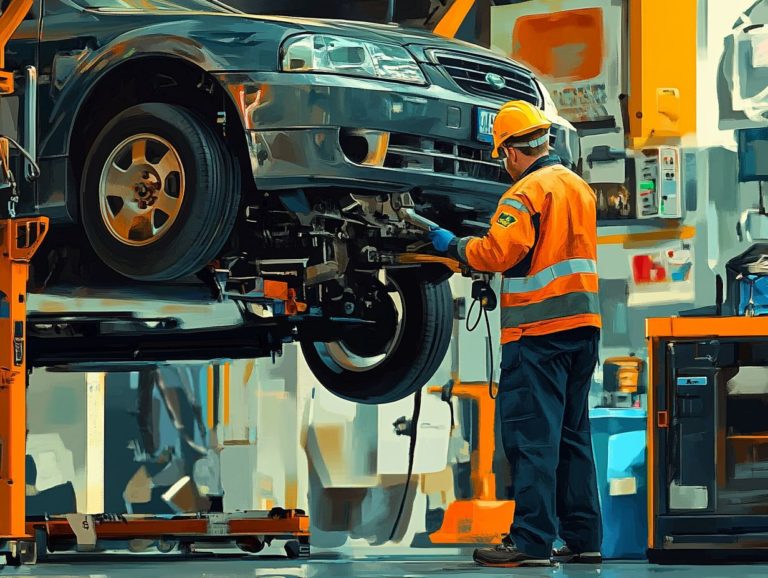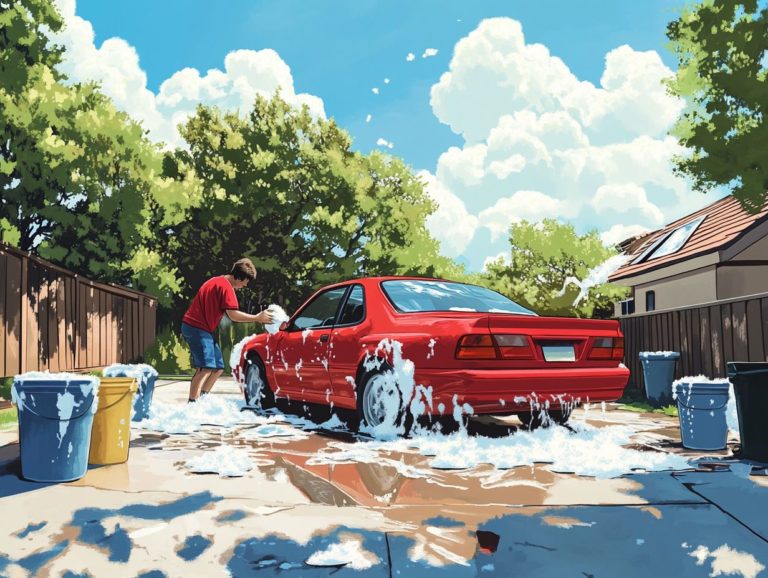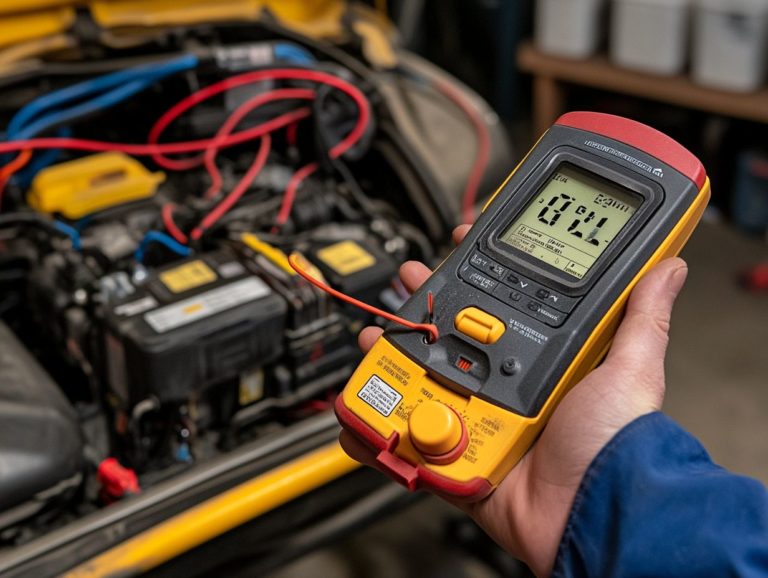How to Clean Your Car’s Engine Bay?
Cleaning your car’s engine bay is often an overlooked task, yet it plays a crucial role in the overall health and longevity of your vehicle. A clean engine not only boosts performance but also makes it easier for you to spot potential issues before they escalate into major problems.
This article delves into the numerous benefits of regular cleaning, the supplies you ll need, and a step-by-step guide to transforming your engine bay into a pristine showcase. You ll also uncover essential tips to maintain that immaculate appearance for longer.
Dive in now to give your engine the care it deserves!
Contents
- Key Takeaways:
- The Importance of Cleaning Your Car’s Engine Bay
- Supplies Needed for Cleaning
- Preparing Your Car for Cleaning
- Cleaning Your Car’s Engine Bay
- Tips for Maintaining a Clean Engine Bay
- Frequently Asked Questions
- How to Clean Your Car s Engine Bay?
- What supplies do I need to clean my car s engine bay?
- Is it safe to clean my car s engine bay?
- How often should I clean my car s engine bay?
- Can I use a pressure washer to clean my car s engine bay?
- Should I clean my car s engine bay when the engine is hot or cold?
- Do I need to cover any specific areas when cleaning my car s engine bay?
Key Takeaways:
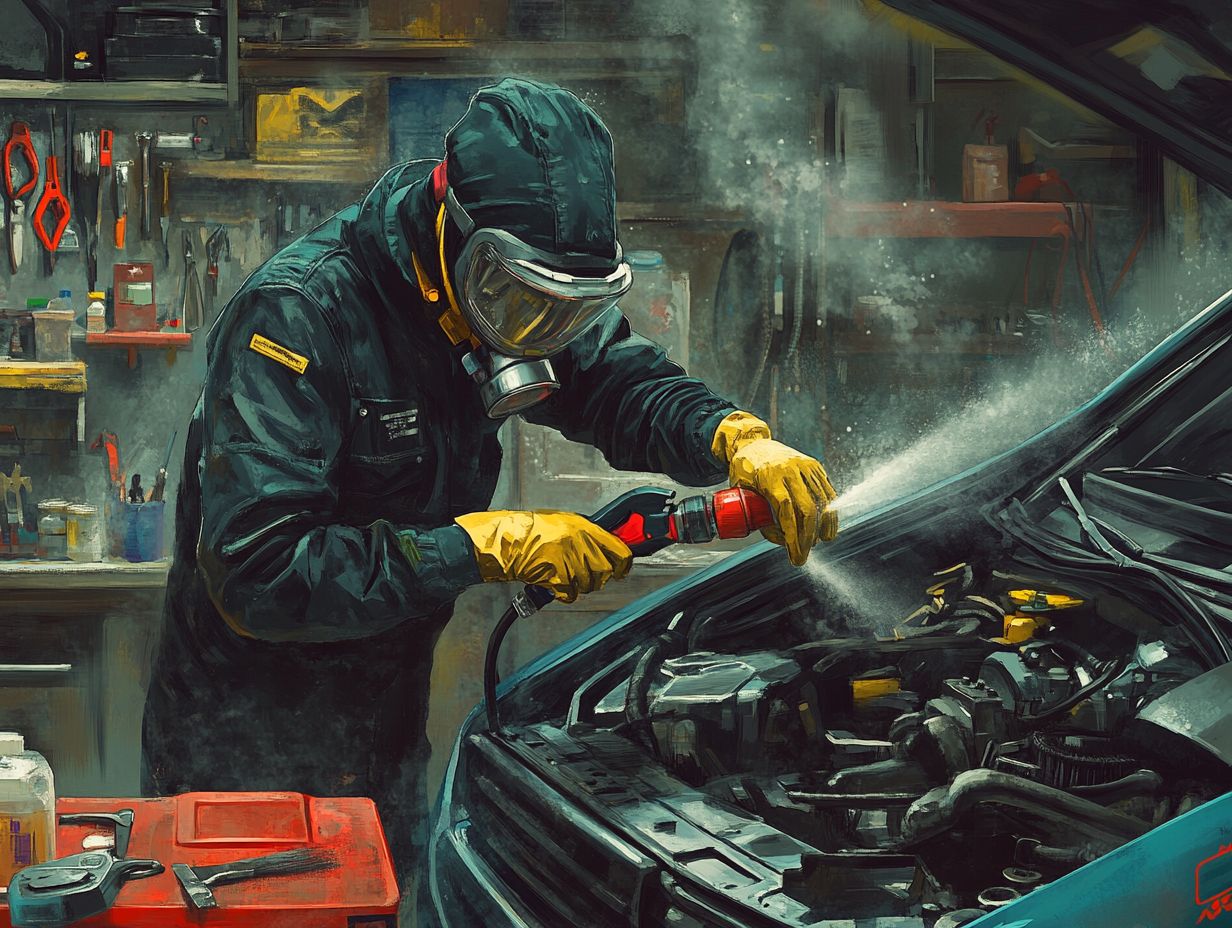
- Regularly cleaning your car’s engine bay improves its appearance and helps prevent potential breakdowns and costly repairs.
- Before cleaning, gather essential tools and products, such as a cleaner that removes grease and grime, a brush, and microfiber towels to effectively and safely clean your engine bay.
- Taking simple preventative measures, like covering sensitive components and avoiding harsh chemicals, can help maintain a clean and well-functioning engine bay.
The Importance of Cleaning Your Car’s Engine Bay
Cleaning your car’s engine bay is essential for maintaining both its appearance and the functionality of vital components within the engine compartment. Regular cleaning eliminates grime, dirt, and debris that can lead to corrosion and leaks, ultimately impacting the lifespan of key parts like the battery, hoses, and belts.
By ensuring these components remain clean, you not only promote a smoother ride but also minimize the risk of potential mechanical failures.
Benefits of Regular Cleaning
Regularly cleaning your car’s engine bay provides a multitude of advantages, including heightened safety, improved maintenance, and an extended lifespan for essential engine components.
Keeping the engine bay free from dirt and debris significantly reduces the risk of corrosion that threatens to degrade metal parts over time. This routine maintenance simplifies inspections, allowing you to quickly spot potential issues such as leaks or frayed wires.
Taking this proactive stance enhances your vehicle’s performance and ensures it runs efficiently, minimizing the chances of breakdowns on the road.
A pristine engine bay also contributes to better heat dissipation, further protecting the engine s health and enhancing your driving safety.
Supplies Needed for Cleaning
To effectively clean your car’s engine bay, you’ll need a selection of high-quality supplies. Start with a cleaner that removes grease and grime to tackle the tough grime, then grab a pressure washer for a powerful rinse.
Don’t forget microfiber towels for drying and soft-bristle brushes to gently remove any stubborn dirt. With the right tools in hand, you can ensure that every inch of your engine bay is cleaned safely and efficiently.
Essential Cleaning Tools and Products
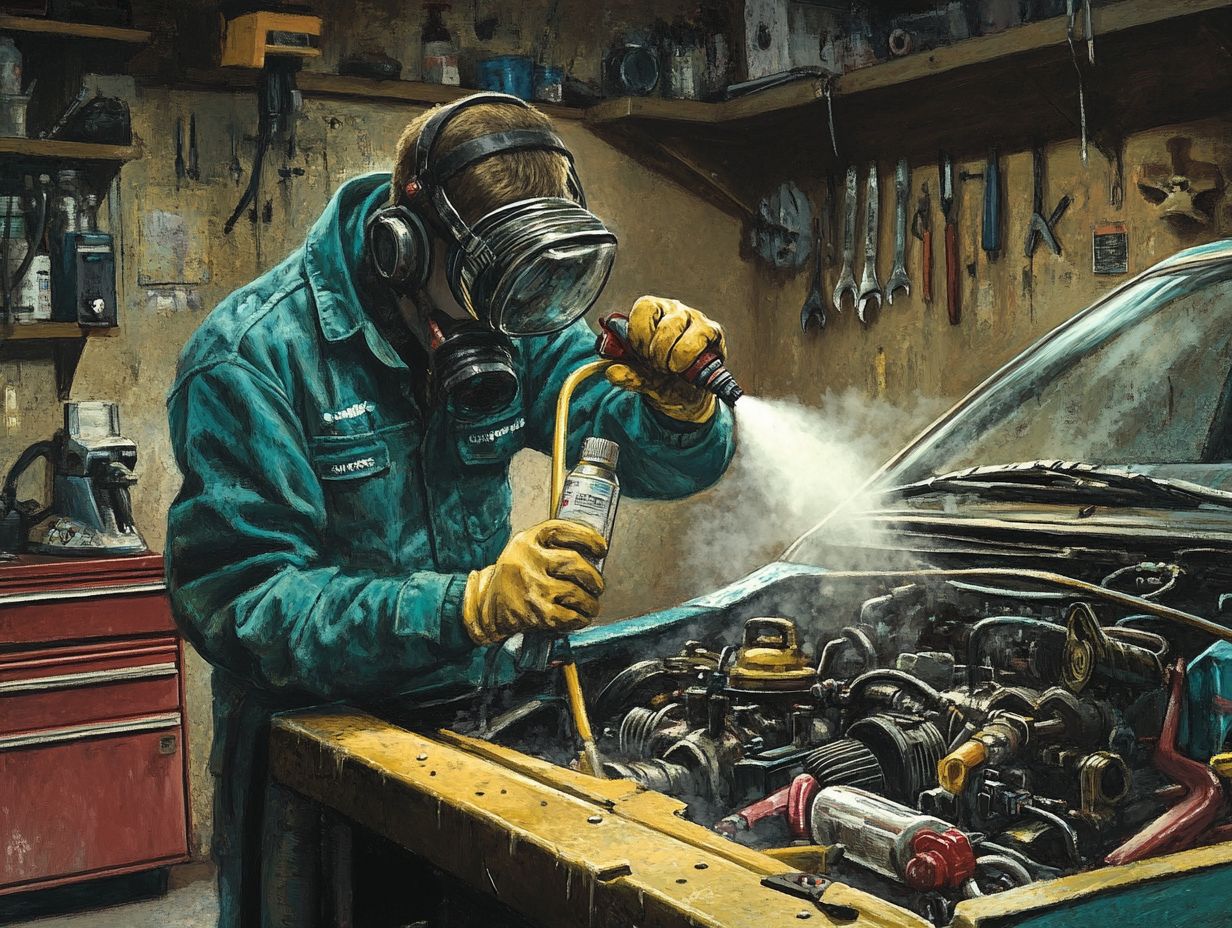
Essential cleaning tools and products in your arsenal should include cleaners that remove grease and grime like Spray Nine and 303 Aerospace, specially formulated for automotive applications. Pair these with a pressure washer for rinsing and microfiber towels for drying, and you re well-equipped.
These tools tackle stubborn grime and grease with ease and provide crucial protection for both plastic and metal components. When using a cleaner that removes grease and grime, spray the product directly onto the affected areas and let it sit for a few minutes. This allows the potent formula to penetrate and break down tough deposits effectively.
Afterward, a pressure washer can rinse away all residues, ensuring a thorough cleanse. Regarding drying, microfiber towels are your best friend. They absorb moisture gently without scratching sensitive surfaces, making them a critical part of any cleaning toolkit.
By mastering the proper techniques for using these products, you can achieve immaculate results while extending the life of your vehicle s surfaces.
What steps will you take to keep your engine bay clean?
Preparing Your Car for Cleaning
Before you dive into cleaning your car’s engine bay, it s crucial to prepare your vehicle with care. Start by inspecting all components for any leaks. This helps you catch potential issues early.
Cover sensitive parts to shield them from water and debris. Don your safety gear to protect yourself throughout the process. Taking these steps will set you up for a successful and safe engine bay cleaning experience.
Steps to Take Before Cleaning
Before diving into the cleaning process, it’s essential to inspect for leaks, cover sensitive components, and wear proper safety gear. These preparatory actions help safeguard the environment and everyone involved.
Inspecting for leaks enables you to identify potential hazards that might lead to chemical spills or unsafe working conditions. Covering sensitive components, like electrical outlets or delicate machinery, protects them from moisture and prevents any accidental damage during the cleanup.
Wearing the right safety gear is vital and includes gloves, goggles, and masks. This ensures you’re adequately shielded against harmful substances, creating a healthier workspace for yourself. Each of these steps boosts the overall effectiveness of your cleaning and minimizes the risk of accidents and environmental contamination.
Cleaning Your Car’s Engine Bay
Cleaning your car’s engine bay requires a step-by-step method. Begin with a thorough wash using a pressure washer to eliminate loose grime, and don’t forget to follow guidelines such as how to properly clean your car’s exterior to ensure a complete clean.
Follow this by rinsing and delicately scrubbing the components, ensuring each part is spotless and entirely free of dirt.
Step-by-Step Cleaning Process
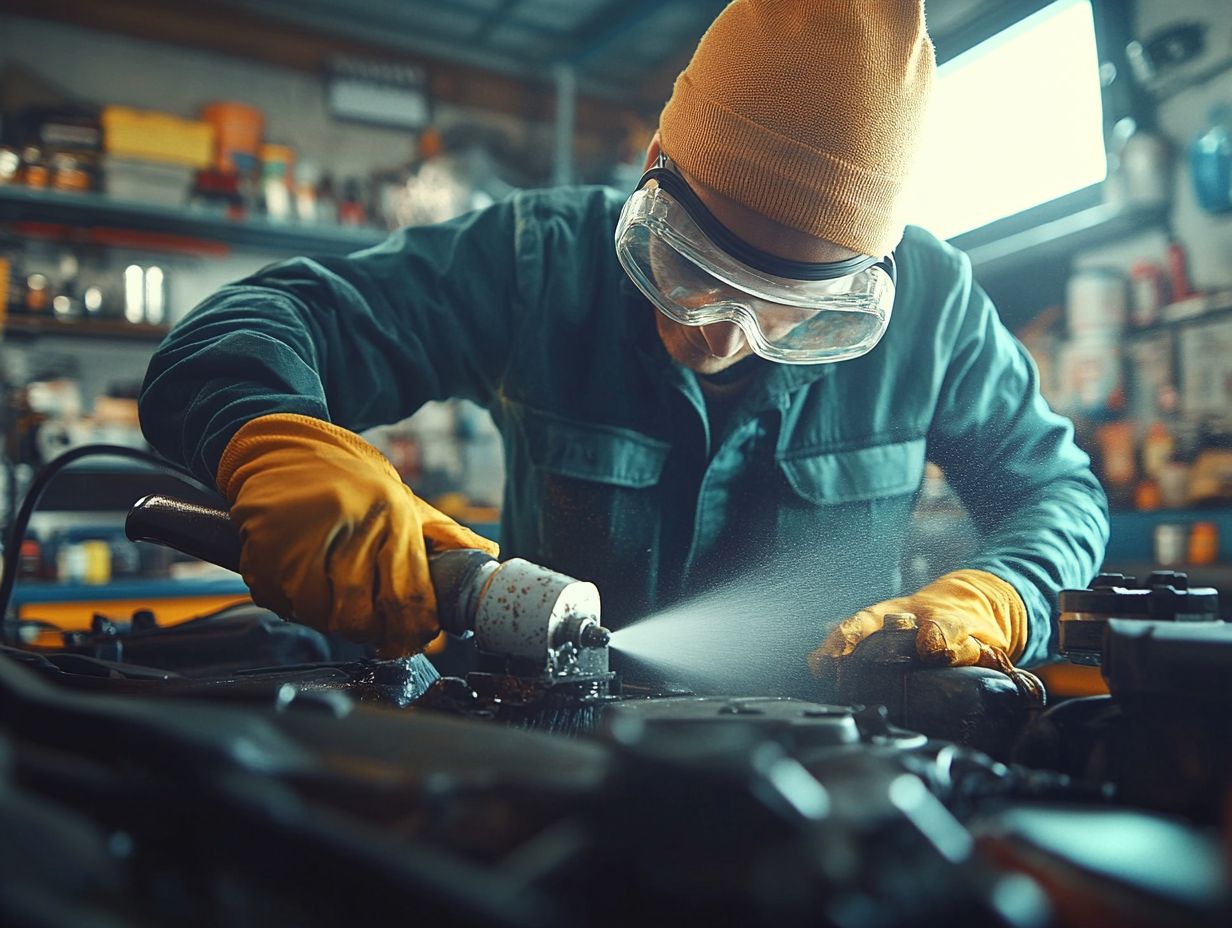
The step-by-step cleaning process starts by grabbing a pressure washer to loosen stubborn dirt and grime. Next, apply a degreaser, scrub with soft-bristle brushes, and then rinse with water to ensure every last bit of residue is gone.
To make this method truly effective, it s crucial to begin with the right pressure setting on your washer typically between 2000 and 3000 PSI (pounds per square inch) for most surfaces. Once the initial layer of dirt is lifted, selecting a high-quality degreaser will elevate your cleaning game. Opt for biodegradable options that tackle grease while being kind to the planet.
When it comes time to scrub, using soft-bristle brushes will help you avoid damaging surfaces while effectively reaching into those pesky crevices. After rinsing, consider finishing off with a squeegee to eliminate water spots, ensuring a sparkling finish. This thorough method saves you time and keeps your engine bay looking brand new!
Tips for Maintaining a Clean Engine Bay
To maintain a pristine engine bay, embrace preventative measures such as conducting regular checks, clearing away debris, and employing protective gear.
These practices will significantly enhance both the cleanliness and longevity of your engine components, ensuring they remain in top condition for years to come.
Preventative Measures for Keeping Your Engine Bay Clean
Effective preventative measures for keeping your engine bay pristine include conducting regular checks, inspecting components in a timely manner, and proactively removing debris. These practices minimize the risk of corrosion and rust formation while enhancing your vehicle’s overall performance.
Regular checks enable you to detect leaks or weaknesses in hoses, belts, and electrical connections early on, which can save you from costly repairs later. Timely inspections of crucial components like the battery and coolant system ensure optimal functionality, extending the lifespan of essential parts.
By removing accumulated dirt and debris, you can prevent potential blockages in airflow and overheating issues that can significantly impact engine life. By committing to these maintenance routines, you contribute to your vehicle’s longevity and reliability, paving the way for a smoother, more efficient ride.
Frequently Asked Questions
1. How often should I clean my engine bay?
Regular cleaning is recommended every 6 months to a year, depending on driving conditions.
2. Can I use a regular garden hose instead of a pressure washer?
While a garden hose can work, a pressure washer is more effective at removing stubborn grime.
3. What safety gear do I need for cleaning?
Essential safety gear includes gloves, goggles, and masks to protect against harmful substances.
Act now to avoid costly repairs later! Maintain your vehicle regularly for optimal performance.
How to Clean Your Car s Engine Bay?
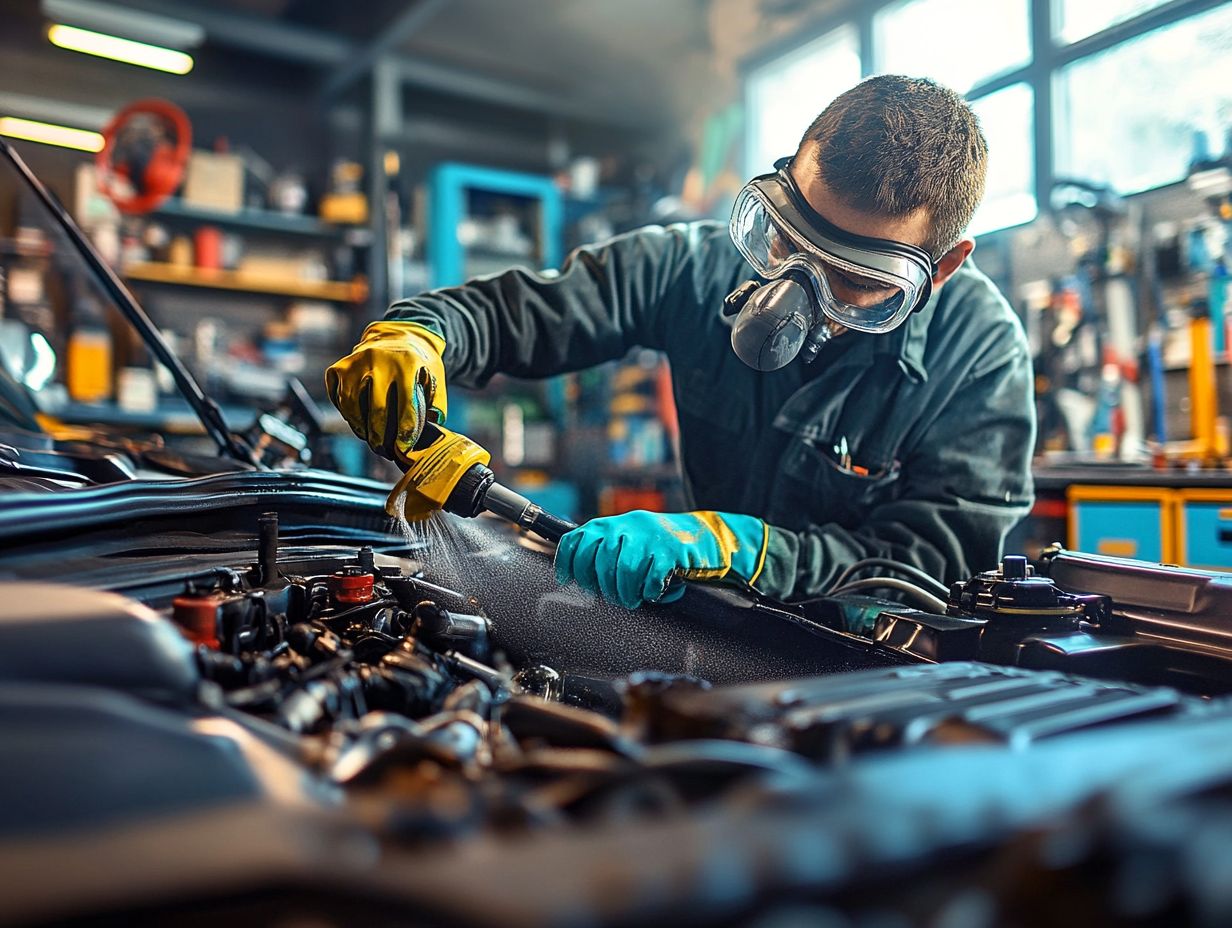
Ready to give your car the care it deserves? Let s dive into how to clean your engine bay!
What supplies do I need to clean my car s engine bay?
You will need a degreaser, a brush or sponge, a hose, and a towel for drying.
Is it safe to clean my car s engine bay?
Yes, it s safe if you follow important steps. Cover sensitive areas and avoid electrical components.
How often should I clean my car s engine bay?
Keep your engine bay looking sharp! Aim to clean it every 6-12 months.
Clean it more often if dirt and grime build up.
Can I use a pressure washer to clean my car s engine bay?
No, using a pressure washer is not recommended. The high pressure can damage sensitive components.
Should I clean my car s engine bay when the engine is hot or cold?
It s best to clean your engine bay when it s cool. This helps avoid burns or damage.
Do I need to cover any specific areas when cleaning my car s engine bay?
Yes, cover the air intake, electrical components, and exposed wires. Plastic bags or aluminum foil work well for protection.

